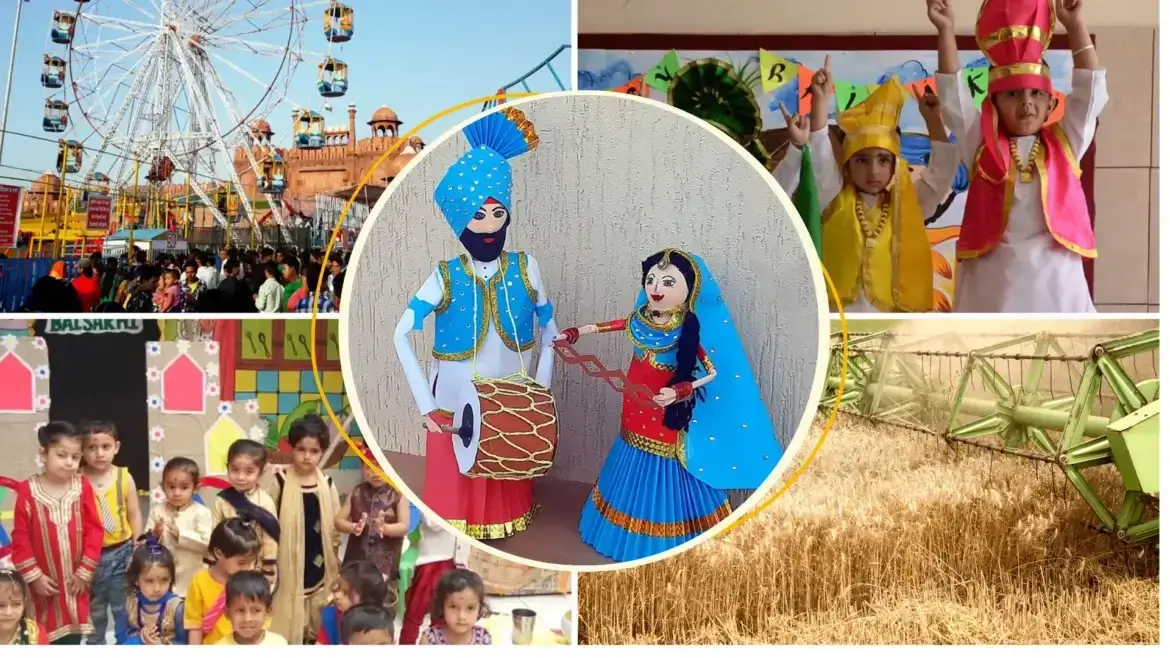Image credit to Punjab News Express
Starting with, Geographical Links:
Swami Rajeshwaranand started by explaining the geographical ties between Lord Ram and Punjab. He pointed out various places in Punjab that are intricately linked to the life and tales of Lord Ram.
For instance, the village ‘Ghuram’ on Pehowa Road, known as ‘Kaushalyapuram,’ is identified as the maternal village of Lord Ram, being the birthplace of his mother Kaushalya.
Additionally, ‘Ajj Sarovar’ in Kharar is named after Maharaja Ajj, Lord Ram’s grandfather.
Whereas, it is stated that Maharishi Valmiki’s ashram near Amritsar, Punjab, was the spot where the wise man Luv-Kush received his training in the scriptures and weapons.
Swami Rajeshwaranand also highlighted that Maharishi Valmiki, the author of the Ramayana, spent a significant part of his life in Punjab.
These connections paint a vivid picture of Lord Ram’s deep roots in the geography of Punjab.
The spiritual bond between Lord Shri Ram and Punjab is not just a matter of geography but is also embedded in the spiritual fabric of the region.
Swami Rajeshwaranand quoted Gurbani verses from the revered Sri Guru Granth Sahib ji, “Tretey Tey Maneyo Ram Raghuvansh Kahaeyo”. Also, Great Gur Sikh Bhai Gurdas ji said in VAAR “Tere Satguru Ram Ji Ram Ram Jape Sukh Pave” which not only acknowledges the spiritual significance of Lord Ram but also integrates his teachings into the Sikh spiritual ethos.
The city of Ayodhya’s connection with Sikhism adds another layer to this spiritual tapestry.
Guru Nanak Dev Ji, the first Sikh Guru, is said to have visited Ayodhya in 1557, sat down at Brahmakund Ghat, which is located on the banks of the Saryu river, and held a Satsang under a Bel tree. Even today, the Gurudwara Brahmakund Sahib in Ayodhya is ornamented with that tree.
Followed by the ninth Guru, Shri Guru Tegh Bahadur Ji, and the tenth Guru, Shri Guru Gobind Singh Ji, with Mata Gujri Ji and her maternal uncle Kirpal Chand Ji, they made their way to this location while they were travelling from Patna to Anandpur Sahib. While they were there, they fed the monkeys, a custom that continues to exist today.
The presence of Guru Nanak Dev Ji’s tree at Gurudwara Brahmakund Sahib in Ayodhya and Guru Gobind Singh Ji’s association with the place further solidify the spiritual connection of Punjab and Ramayana.
Image credit to Ramayana the legend of Prince Rama
Historical Synchronicity:
Highlighting the historical synchronicity between Shri Guru Nanak Dev Ji and the era of Babar. Guru Sahib wrote about the horrible things Babar did. Babar’s army destroyed the Ram Temple and built the Babri Masjid. He had said, “Eti Maar Payi Kurlane Tain Ki Dard Na Aaya,” which gave a lot of information about the deeds of Babar.
Even in Sri Dasam Granth, Guru Gobind Singh Ji wrote that Lord Ram was an incarnation of Lord Vishnu in Treta, “Rama Avtaar” – “Tai hee durga saajake daintaan da naas karaaya. Taitho hee bal raam lai baana dehasar ghaaya. Taitho hee bal krishan lai kans kesee pakad giraaya.”
This historical context adds depth to the shared narratives between Sikhism and the events surrounding Lord Ram.
The evidence from scriptures, historical accounts, and cultural intersections paints rich memories that bind Lord Ram with the vibrant land of Punjab. As Swami Rajeshwaranand emphasised, we all will always celebrate the historical day of January 22, 2024, symbolising not just remembrance but a collective commitment to embodying the teachings of Lord Ram, fostering love and brotherhood in our hearts and beyond.






















































Leave a Comment